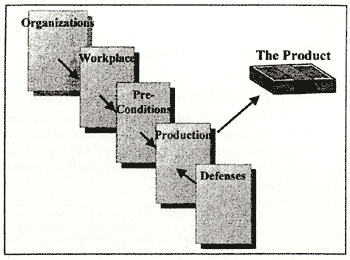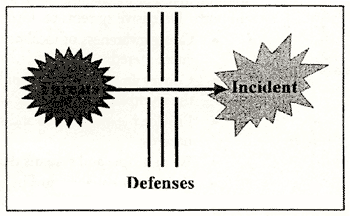|
MARINE ACCIDENT INVESTIGATION PROCEDURES
ENCLOSURE 2
CONDUCTING CAUSAL ANALYSIS
BY
CHARLES BARBEE & DAVID DEAVER
CONDUCTING CAUSAL ANALYSIS
I. FUNDAMENTAL PRINCIPLES OF CAUSAL ANALYSIS (UNDERLYING FOUNDATION)
Marine investigators shall keep the following fundamental principles in mind when explaining how a specific incident occurred:
Principle #1: Shipping, diving, oil exploration, fishing, towing, fuel transfers, passenger operations, and recreational boating are complex production systems. These production systems do not create new cars or refrigerators; instead they produce intangibles such as safe passenger voyages, timely delivery of oil, and so on. Because maritime transportation is a production system, it shares the elements common to every complex production system.
Principle #2: All incidents (including even the most minor) are failures of the system, not simply the human or equipment directly involved.
Principle #3: No human error is entirely to blame. Human error is a naturally occurring, intrinsic part of human performance. While holding mariners accountable for their actions and taking steps to reduce human errors, marine investigators should bear Principle #2 firmly in mind. The human error could not have resulted in an incident unless conditions in the system (especially the system's defenses against human error) were already ripe for it.
Principle #4: System incidents have their primary origins in the fallible decisions made by the high-level corporate, underwriter, regulatory, or plant managers. These fallible decisions are an inevitable part of the decision-making process, and the process of improving systems involves making fallible decisions harmless as opposed to eliminating high-level error.
Principle #5: The whole point of analyzing the causes of an incident is to improve the system and prevent reoccurrence. Accordingly, the marine investigator's job is to identify system failures and propose fixes.
II. How SYSTEMS OPERATE
II.A. Model of Production
Many psychologists view all organized human or technological systems as production systems. These production systems make energy, a chemical substance, a mechanism, or the mass transportation of any commodity (including people) by road, rail sea, or air. In this view the many maritime operations, once thought independent, are just "pieces" rolling off the maritime transportation system. In this system, there are many factors, that include the charts and publications that mariners use, the aids to navigation on waterways, vessel traffic systems, the laws and regulations in place, safety inspections, the navigation equipment and all the other systems on vessels, and even mariners standing the watch. When these factors come together in precise synchronization, the product is the safe and timely transit, fuel transfer, or use of our nation's waterways. As a complex production system, the maritime transportation system can be described in terms of the elements of any production system.
II.B. The First Element: Organizations and Decision Makers
In order for a system to operate, it must have an initial direction. At the organizational level, decision makers respond to the pressures, demands, and opportunities in the outside world and set the goals for the system. They also direct, at a strategic level, the ways in which the system will reach these goals. In practice, decision makers take limited financial and other resources (equipment, people, talent, expertise, and time), and direct how they will be spent in order to get the most productivity with the highest degree of safety (a process of balance). In the simplest of terms, decision makers provide the money to begin an operation, and the shell building (or vessel) which, when properly equipped and staffed will become an operating plant. Organization elements are those that set the goals and provide the means to reach them.
Decision Makers are the high level architects and managers of the system. They set the rules and objectives of the game for the system. In the maritime transportation system, decision makers include lawmakers and regulators, underwriters and cargo lines, corporate CEOs and owner-operator fishers.
II.C. The Second Element: Workplaces and Line Managers
Below the decision makers, line managers must create specific plans to carry out operations, including the hiring of personnel, the training of these personnel, the purchase and deployment of exactly the right type of equipment, systems for managing ongoing operations, and finally, means for reacting to all the foreseeable problems that will arise. Again, in simple terms, line managers take the money and empty shell, provided by the decision maker, and transform it into a plant filled with managers, workers, and equipment. Workplace elements are those personnel, buildings, equipment, vessels that manage operations.
Line Managers are the departmental specialists who take the strategies outlined for them by decision makers and translate them into concrete activities. In large companies, line managers have specialized areas of authority and operation, and are known as facility manager or by departmental titles such as operations, training, sales, maintenance, finance, procurement, safety, engineering support, personnel, and so on. In a small operation, such as an owner-operator small passenger vessel, the licensed operator might fill all of these line manager jobs, in addition to his or her duties as a decision maker.
II.D. The Third Element: Preconditions
Although the line managers and decision makers have provided a system, that system cannot be considered ready to operate until both the workers and the equipment they use are properly prepared to "run the line." To be ready, the system must possess certain attributes:
・Reliable equipment of the right kind;
・A skilled and knowledgeable workforce;
・Appropriate attitudes and motivation;
・Proper work schedules, supply delivery schedules, and maintenance programs,
・Proper conditions allowing safe and efficient operations;
・Procedures that give clear guidance about how the job is to be done; and
・Clear understandings of what undesirable job performance is.
Precondition elements are those conditions that make people and machinery ready to go to work.
II.E. The Fourth Element: Production and Line Workers
Once the system is properly manned, equipped, and managed, the line can be turned on and product can be created. Production is the precise synchronization of human and mechanical activities to produce the right product at the right time. Production elements are the actual operation of the system.
Line Workers are the professional and recreational mariners (and shore-side maritime workers) who perform the myriad of tasks using many types of machinery in order to get the job done. In the maritime transportation system, line workers are licensed mariners, unlicensed crew and operators, dock workers, shipyard workers, recreational boaters, facility workers, VTS personnel, etc.
II.F. The Fifth Element: Defenses
In any system, there are natural and man-made hazards. Where they can reasonably be foreseen, the system should have safeguards that protect people and equipment from injury, damage, or production-damaging losses. Defenses may be human (procedural), such as a buddy system, plotting fixes; or mechanical, such as guards, life jackets; or a combination of both. Defensive systems perform the following functions:
・Create awareness of local hazards and how they might be encountered;
・Convey an understanding of how, when, and why hazards occur in the workplace;
・Provide means (devices and systems) for detecting the presence of hazards;
・Warn people and systems that some hazard is imminent;
・Protect potential victims by separating them from the hazard;
・Allow people and system to recover from some "off-normal" or hazardous condition (i.e., to correct the situation);
・Contain or limit the spread of some hazard, or limit the number of victims affected;
・Provide escape from the hazard; and
・Rescue injured or threatened individuals from a situation in which negative outcomes have already occurred.
II.G. The System as a Whole
The various elements in the model of production relate in very specific ways. This relationship can be represented as below:
| (拡大画面:161KB) |
 |
III. HOW SYSTEMS FAIL
III.A. Introduction: Threats, Defenses, and Negative Outcomes
Any complex production system contains defenses against foreseeable threats. Incidents, which can loosely be defined as the occurrence of an unwanted outcome (event), come to pass when there are holes in the system's defenses through which an unanticipated threat penetrates.
| (拡大画面:106KB) |
 |
|